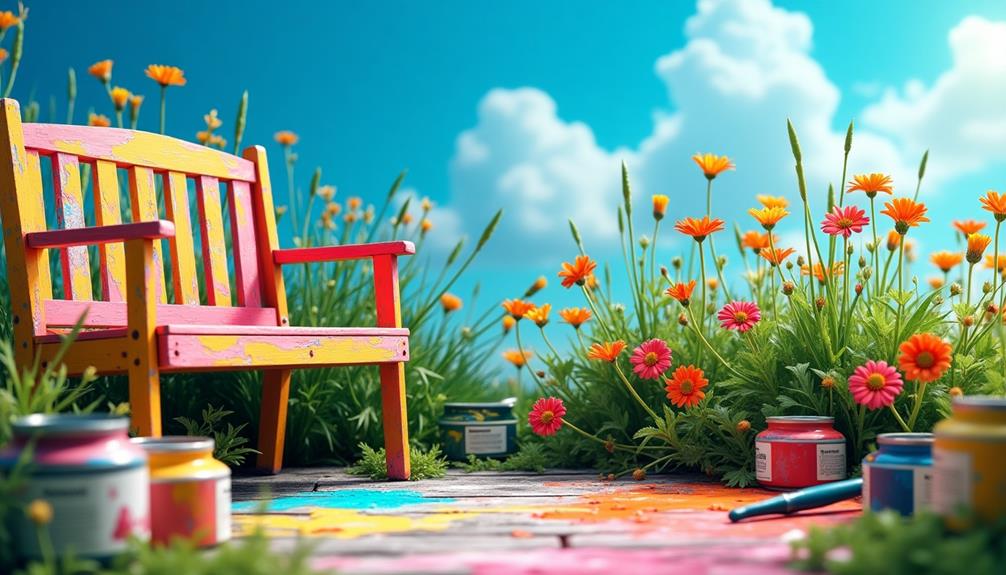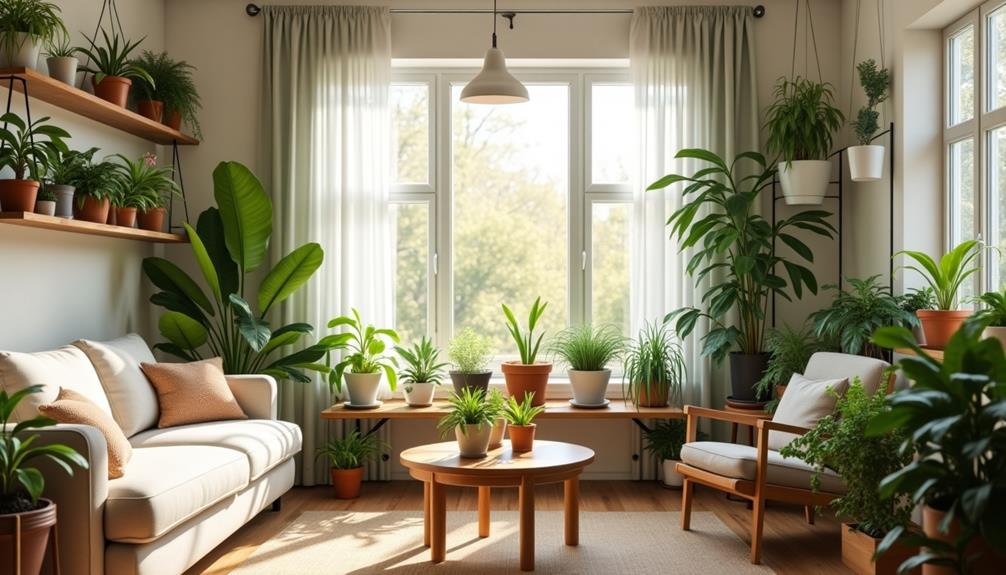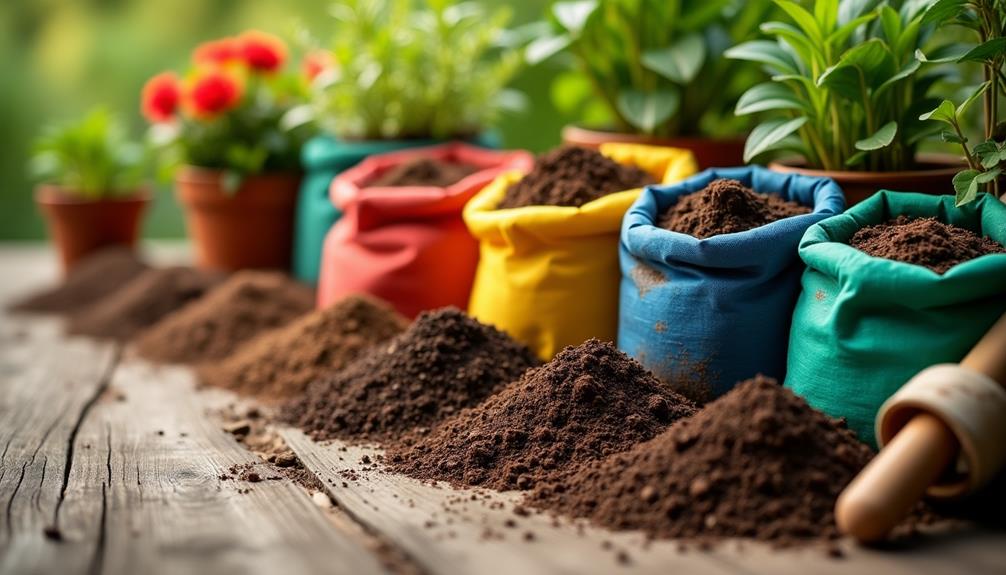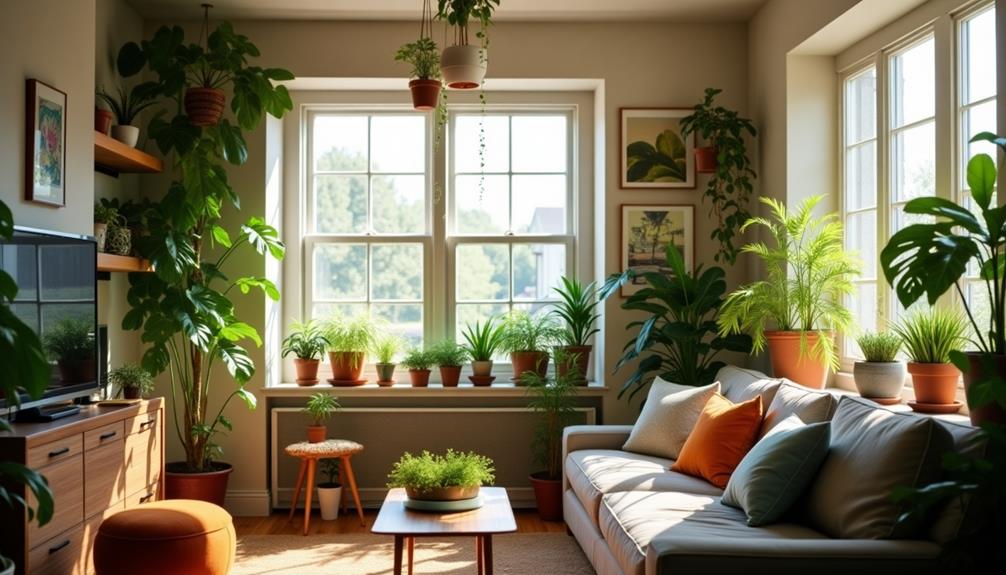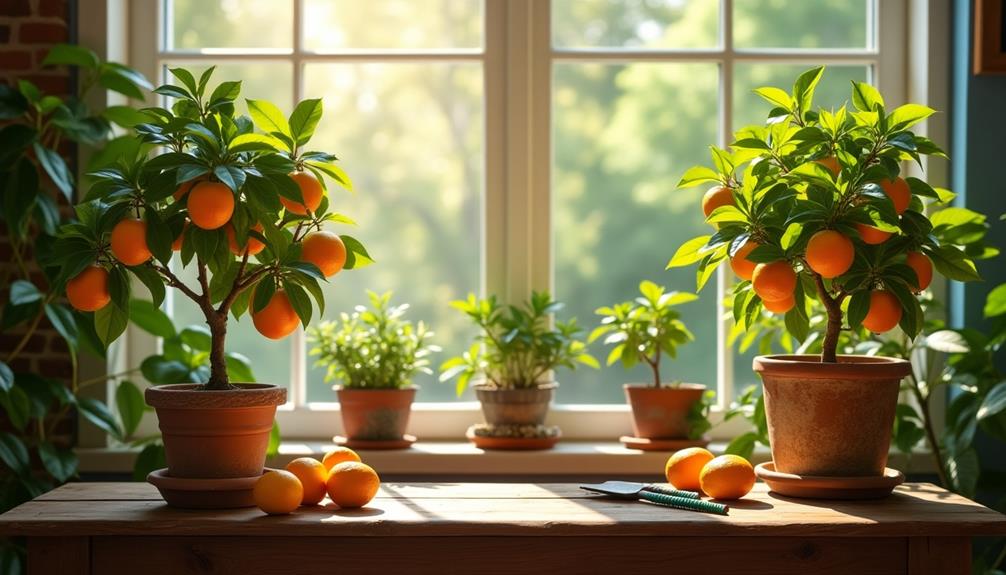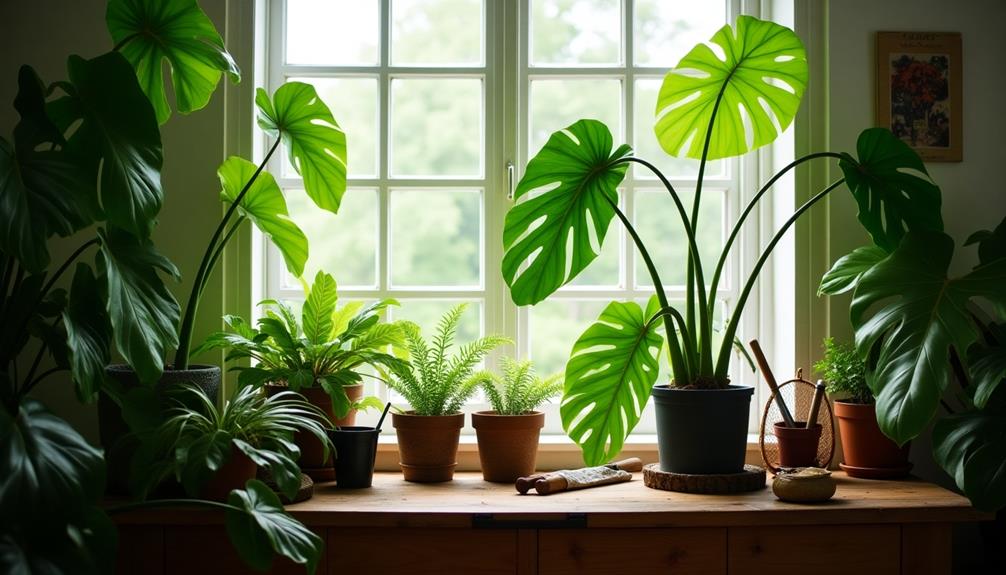When it comes to painting outdoor furniture, you need to consider several key factors to ensure a lasting finish. You shouldn't underestimate the importance of selecting the right paint and preparing the surfaces properly. Skipping these steps can lead to peeling and fading much sooner than you'd like. Plus, using the right tools makes all the difference in achieving a smooth application. But before you start, there are specific techniques and tips that can significantly impact the outcome of your project—let's explore what those might be.
Choose the Right Paint
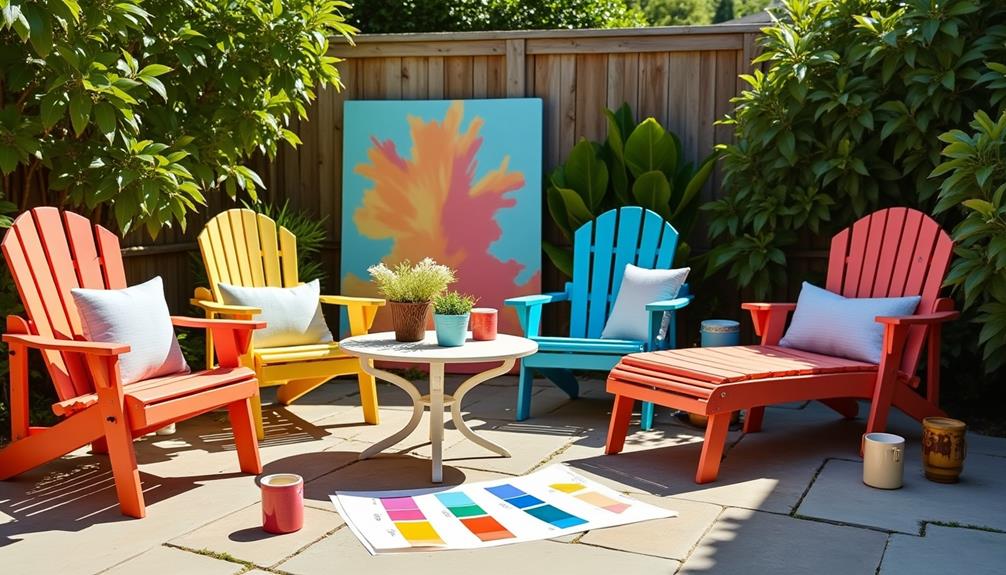
When choosing paint for your outdoor furniture, it's crucial to pick the right type for durability and appearance. You want something that can withstand the elements while still looking great.
Start with color selection; consider your surroundings and the vibe you want to create. Bright colors can add a cheerful touch, while muted tones might blend seamlessly into a natural setting. Don't forget to think about how the color will fade over time—some shades hold up better than others.
Next, look at finish options. A glossy finish can enhance colors and provide a sleek look, but it may show scratches more easily. On the other hand, a matte or satin finish hides imperfections and can give your furniture a more rustic charm.
Think about how often you'll be using the furniture and the level of maintenance you're willing to commit to.
Ultimately, picking the right paint isn't just about aesthetics; it's about ensuring your outdoor furniture stays beautiful and functional for years to come.
Take your time with these decisions, and you'll love the results!
Prepare the Surface
Before you start painting, it's essential to prepare the surface of your outdoor furniture properly. This step can make all the difference in achieving a smooth, long-lasting finish.
First, begin with surface cleaning. Remove any dirt, grime, or mildew using a mixture of warm water and mild detergent. A soft brush or cloth can help you get into those hard-to-reach spots. Rinse thoroughly and allow it to dry completely before moving on.
Next, tackle surface sanding. If your furniture has an old finish or peeling paint, sanding is crucial. Use medium-grit sandpaper to smooth out imperfections and create a better bond for the new paint. Pay special attention to rough edges and corners.
Once you've finished sanding, wipe down the furniture with a damp cloth to remove any dust particles.
Use Proper Tools
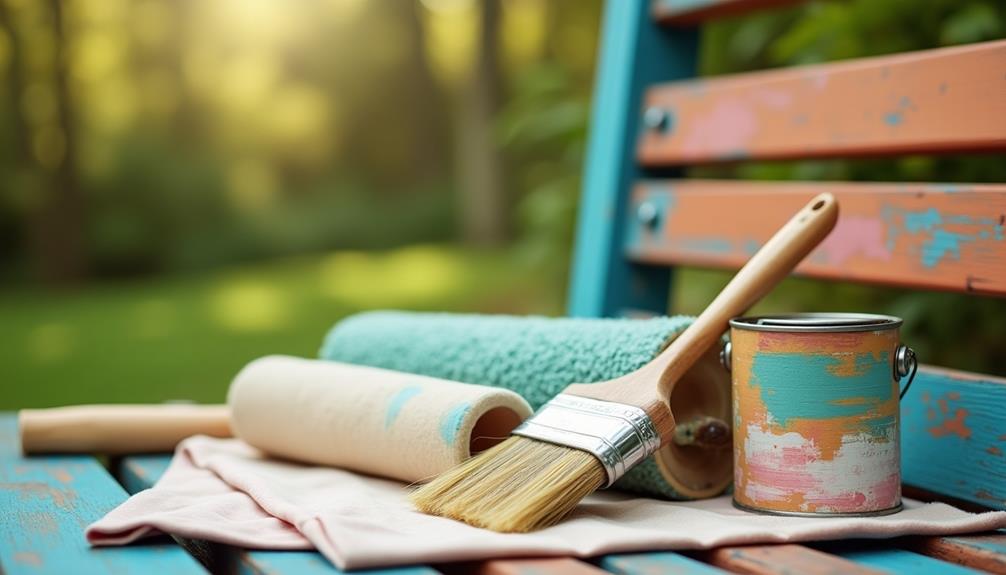
After prepping the surface, grabbing the right tools is key to achieving a professional-looking paint job on your outdoor furniture. The quality of your tool selection can make a huge difference in the final result.
Start by choosing brushes or rollers that are appropriate for the paint types you plan to use. For most outdoor furniture, a high-quality synthetic brush works best with water-based paints, while a foam roller can provide a smooth finish.
If you're using spray paint, invest in a good spray gun or opt for high-quality aerosol cans. Don't forget to have a drop cloth handy to catch any overspray.
A good pair of gloves and a mask are essential, especially when working with strong solvents or sprays.
Apply in Ideal Conditions
Successful painting hinges on applying your chosen finish in ideal conditions. To achieve the best results, aim for temperatures between 50°F and 90°F. These temperatures allow the paint to adhere properly and dry uniformly. If it's too cold, the paint may not cure correctly, leading to a rough texture. Conversely, high temperatures can cause the paint to dry too quickly, resulting in an uneven finish.
Humidity also plays a crucial role. Ideally, you should work in conditions with optimal humidity levels between 40% and 70%. High humidity can prolong drying times and may lead to issues like bubbling or peeling. If it's too dry, the paint might dry too fast, which can also affect adhesion.
Before you start painting, check the weather forecast to ensure you're working on a day that meets these conditions. If the weather isn't cooperating, consider waiting for a better opportunity.
Layering and Drying Time
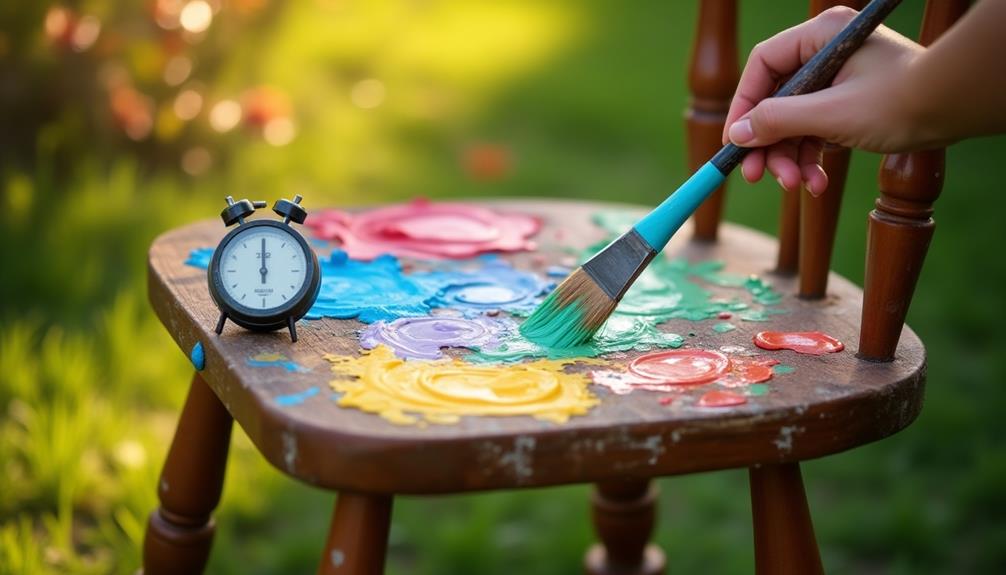
Once you've ensured ideal painting conditions, it's time to focus on layering and drying time. Proper layering not only enhances the durability of your paint job but also allows you to play with color combinations and texture effects.
Start by applying a primer if your furniture is made of a porous material. This step creates a solid foundation and improves adhesion.
Once the primer dries, apply your base coat. Make sure to use even strokes to avoid drips and ensure a smooth finish.
After the first coat dries completely—typically a few hours, depending on the paint—add a second layer. This is where you can experiment with different color combinations to create a unique look.
For texture effects, consider using a sponge or brush to add depth. Just remember, each layer needs adequate drying time before moving on to the next. Rushing this process can lead to bubbling or peeling later on.
Generally, it's best to wait at least 24 hours before adding final touches or sealer. Patience pays off, resulting in a stunning outdoor furniture piece that stands out and lasts.
Protect From the Elements
To keep your outdoor furniture looking great, you need to protect it from the elements.
Start by choosing weather-resistant paint and applying a good protective sealant.
Additionally, storing your furniture properly during harsh weather can make a big difference in its longevity.
Choose Weather-Resistant Paint
Choosing the right paint for your outdoor furniture is crucial to ensuring it withstands the elements. You want a product specifically designed to resist moisture, UV rays, and temperature fluctuations.
When selecting your paint, consider color selection carefully. Lighter colors can reflect sunlight, reducing heat absorption, while darker shades may fade faster under intense sunlight.
Next, think about finish types. Satin and semi-gloss finishes are excellent options for outdoor furniture, as they provide a balance between durability and aesthetic appeal. A satin finish offers a soft sheen and is easier to clean, while semi-gloss can withstand harsher weather conditions and is more resistant to scratches.
Make sure to look for paint labeled as weather-resistant or outdoor-rated, as these formulations contain additives that enhance protection against the elements. This way, you'll minimize the need for frequent touch-ups and keep your furniture looking fresh longer.
Ultimately, the right weather-resistant paint can save you time and money in the long run, allowing you to enjoy your outdoor space without constant maintenance.
Use Protective Sealants
Protecting your outdoor furniture goes beyond just selecting the right paint; applying a quality sealant is essential for long-lasting durability. Sealants act as a barrier against moisture, UV rays, and other harsh elements that can damage your furniture over time.
There are several sealant types to consider, including oil-based, water-based, and polyurethane options. Each type has its own benefits, so choose one that fits your furniture material and the conditions it faces.
When applying sealants, use proper application techniques for the best results. Start by ensuring your furniture is clean and completely dry. If you're using a brush, apply the sealant in thin, even coats, and always follow the wood grain.
For larger surfaces, a spray application can provide a smooth finish and save time. Be sure to allow adequate drying time between coats; this will enhance the sealant's effectiveness.
Regularly inspect your furniture and reapply the sealant as needed, especially after harsh weather. Taking these steps will help protect your investment and keep your outdoor furniture looking great for years to come.
Store Furniture Properly
Your outdoor furniture deserves the best care, especially when it comes to storage. Proper furniture storage is crucial for extending its lifespan and maintaining its appearance. When the seasons change, make it a priority to store your furniture in a safe, dry place. This will protect it from harsh weather conditions, like rain, snow, or intense sun, which can cause damage over time.
Consider a seasonal rotation for your pieces. During winter, bring them indoors or cover them with high-quality tarps designed for outdoor use. If space is tight, stack lighter items like chairs or tables, but ensure they remain well-ventilated to prevent moisture buildup.
For larger pieces, like patio sets, use protective covers to shield them from the elements.
Additionally, clean your furniture thoroughly before storing it away. Removing dirt and grime will help prevent mold and mildew during storage.
Maintenance and Touch-Ups
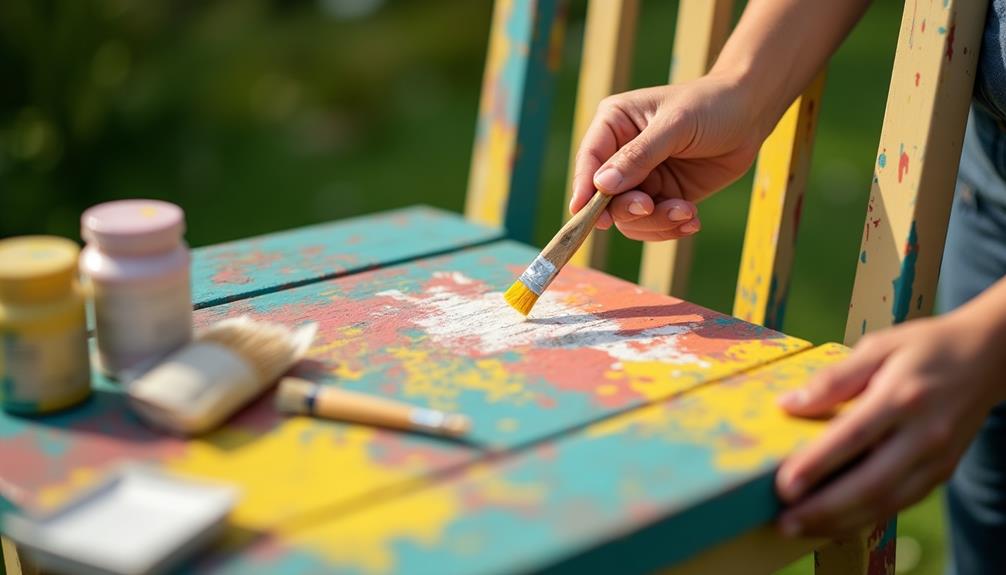
To keep your outdoor furniture looking its best, establish a regular cleaning schedule.
This will help you identify any damage early and address it before it worsens.
Regular Cleaning Schedule
Establishing a regular cleaning schedule can significantly extend the life of your outdoor furniture. By sticking to a consistent cleaning frequency, you'll prevent dirt and grime from building up, which can damage the paint and finish. Aim to clean your furniture at least once a month, or more frequently if you live in an area with a lot of dust or pollen.
When it comes to cleaning solutions, opt for mild soaps and warm water to avoid harsh chemicals that can strip away protective finishes. A soft brush or cloth works best to gently scrub surfaces without causing scratches. Don't forget to rinse thoroughly with clean water to remove any soap residue.
In addition to your monthly cleanings, take a moment to wipe down your furniture after heavy rain or storms. This simple task can prevent water spots and minimize wear over time.
If you notice any stains or buildup, address them promptly to avoid long-term damage. By maintaining a regular cleaning schedule, you'll keep your outdoor furniture looking fresh and ready for enjoyment, ensuring it remains a beautiful addition to your outdoor space for years to come.
Identifying Damage Early
Regular inspections of your outdoor furniture can help identify damage early, preventing minor issues from turning into major repairs.
Start by checking for signs of wear and tear, like cracks in wood or chips in paint. Effective crack detection is crucial; even small cracks can allow moisture to seep in, leading to rot or further deterioration.
Next, perform a rust assessment if you have metal furniture. Look for any signs of rust, especially around joints and welds, where moisture tends to accumulate. If you spot any rust, it's essential to address it immediately to prevent it from spreading.
Make it a habit to inspect your outdoor furniture at least once a season. This proactive approach not only keeps your furniture looking great but also extends its lifespan.
If you do find damage, you can easily touch up the paint or apply a sealant before the problem worsens. Remember, your outdoor furniture is an investment, and maintaining it will ensure you enjoy it for many seasons to come.

